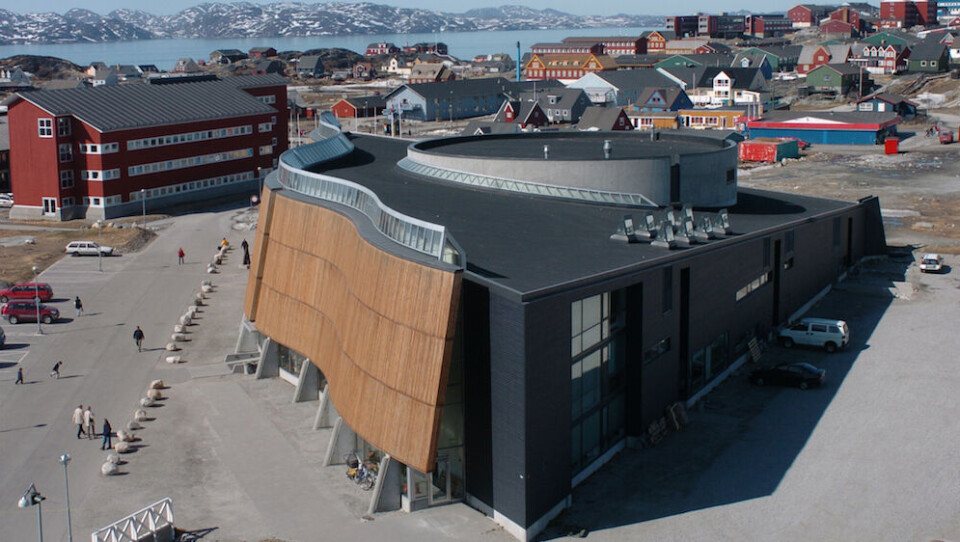New Arctic strategy to be presented in Nuuk
As climate scientists paint an increasingly dire picture of global warming, it has begun to sink in with lawmakers that slowing the development requires immediate action

When the Arctic Council convenes in Nuuk on Wednesday, at the top of the agenda will be a discussion of a new strategy for the group. The eight member states are in broad agreement that the council should play a larger role internationally.
As it becomes clearer that climate change in the Arctic has a global impact, countries are increasingly expressing their interest in joining. France and Italy were recently granted observer status and the EU and China are pressing hard for the same. During the Nuuk summit, participating ministers and other officials will seek to set guidelines for membership as an observer.
Member states and the six permanent representatives of indigenous Arctic populations agree that the Arctic Council begin to work more seriously and that the group should seek to move beyond declarations of intent and instead make politically binding decisions.
One such example is the Arctic Search and Rescue Agreement due to be signed in Nuuk. The agreement was made possible due to the mandate given a working group during the previous ministerial meeting in Norway two years ago.
Norwegian Foreign Minister Jonas Gahr Støre has previously described it as “the first binding agreement that the eight Arctic Council member states agree on as a group, but it’s unlikely to be the last”.
“This is a good example of how we can use the Arctic Council to serve the Arctic as best as possible,” he said.
During next week’s meeting, a working group will also be established to propose an international mechanism for responding to oil spills and other environmental disasters in vulnerable Arctic regions. The issue will be a priority for Sweden during its two-years as chair. Other points on the country’s to do list after it takes over from Denmark have not been revealed, but it is known that common standards for oil extraction is not one of them.
During its chairmanship, Denmark, together with Greenland and the Faroe Islands, have continued the council’s efforts in the areas of climate change, cross-border pollution, environmental issues as well as the issues raised during the International Polar Year.
Most recently, 400 scientists gathered in Copenhagen last week to discuss the council’s Arctic Monitoring and Assessment Programme (AMAP). Hundreds of environmental experts have reviewed the scientific reports about the Arctic and compiled it into a single report that describes the current state of affairs.
The Snow, Water, Ice, Permafrost (Swipa) Report will be presented to representatives from the eight member states during the Nuuk summit. The report’s primary conclusion is that the Arctic is changing faster than previously estimated. Sea ice, the ice cap, snow depths and Arctic glaciers have all declined considerably during the past decade.
The temperature in the Arctic over the past few decades has been the highest in over 2,000 years, according to the report. Temperature increases alone, however, aren’t enough to explain why snow and ice in the Arctic are melting faster than scientists had predicted.
According to their findings, melting snow and sea ice has an amplifying effect on temperature increases.
As the snow and ice retreat, it will have a fundamental impact on living conditions for the nine million people living in the Arctic. The report finds that the changed natural environment will alter fishing and hunting patterns, as well as opening up the region for improved transportation and mineral and oil exploitation.
People living in the Arctic, experts say, should be permitted to exploit climate change for their benefit.
“We need to be careful that as natural resources become more accessible we don’t make unreasonable requirements on people in the region, as we currently do,” said anthropologist and climate researcher Grete K Hoveslrud, from the Oslo-based Centre for International Climate and Environmental Research.
Ice expert Dorthe Dahl-Jensen, of the University of Copenhagen, told the AMAP conference last week that Greenland’s melting ice cap would result in global water level increases of between 90 and 160 centimetres by 2100 affecting millions of people.
The ice cap adds about 20 gigatonnes of ice a year, but during the same period some 200 gigatonnes melt, according to Dahl-Jensen.
“While that’s not sustainable, it would take a really long time before all the ice was gone, even with its accelerating rate.”
In another report to be presented in Nuuk, scientists will draw a connection between mercury pollution in the Arctic and increasing temperatures. According to the report, the mercury can be found in Arctic mammals such as polar bears, seals and whales.
The mercury is brought to the Arctic from industrialised countries by air and ocean currents. Once there, it builds up in the region’s food chain. The report finds that the increased levels of the toxin come as it is released from melting permafrost.
Inuit populations in Greenland and Canada, as well as people in the Faroes, are particularly at risk, because their diets remain rich in marine mammals and certain types of fish that have built up high levels of mercury. Experts say they are concerned about the possible long-term effects on the overall health of the groups.
During the summit, Nuuk will be playing host to groups from the eight Arctic countries. The influx has the city’s hotels filled beyond capacity, and in order to make up for the shortage of beds, ships that can serve as hotels have been sailed to the city.
When the week draws to a close, most of the visitors will depart Nuuk, but the challenges of climate change will remain for the city.